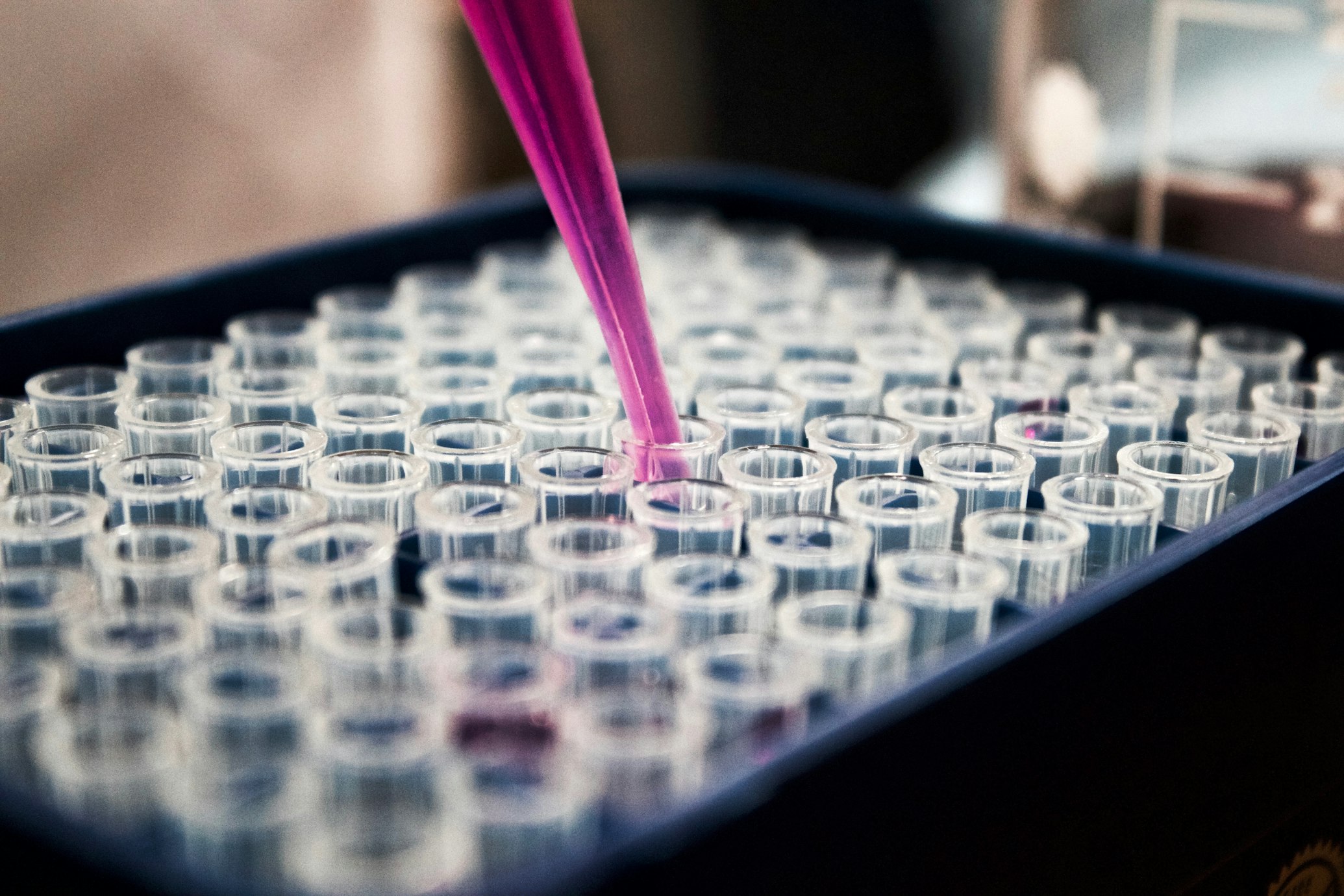The Molecular Magnets
How Aptamer-Driven Extraction is Revolutionizing Science
Navigation
Introduction: The Quest for Precision Extraction
Imagine trying to pluck a single, specific grain of sand from a swirling beach. This is the challenge scientists face when extracting targets—toxins, biomarkers, or drugs—from complex matrices like blood, soil, or food. Traditional methods often lack precision, but a breakthrough emerged in the 1990s: aptamers, synthetic "chemical antibodies" that bind targets with unmatched accuracy 7 . Today, aptamer-driven extraction is transforming environmental monitoring, medical diagnostics, and food safety by combining the precision of biology with the robustness of engineering.
What Makes Aptamers Special?
The Architecture of Precision
Aptamers are short DNA or RNA strands (20–100 nucleotides) that fold into 3D shapes—hairpins, loops, or quadruplexes—creating pockets that latch onto targets. Unlike antibodies, they:
- Withstand harsh conditions (heat, pH shifts) without denaturing 1
- Bind diverse targets, from ions (e.g., mercury) to whole cells 7
- Are chemically modifiable for enhanced stability or signal detection 4
Their discovery hinges on SELEX (Systematic Evolution of Ligands by EXponential Enrichment), a lab evolution process screening trillions of sequences for the "fittest" binder 7 . Recent innovations like Cell-SELEX use whole cells as targets, yielding aptamers for cancer detection 7 .


Inside a Breakthrough: The Gliotoxin Detective
Case Study: Rapid Mycotoxin Detection in Food 4
The Challenge
Gliotoxin (GTX), a lethal mold toxin, threatens food safety and human health. Detecting it requires complex lab equipment, but researchers engineered a one-pot assay using aptamers for field-deployable analysis.
Step-by-Step Innovation
A GTX-binding aptamer (APT16) was truncated and mutated to stabilize its G-quadruplex structure.
Result: Binding affinity surged 10-fold (Kd = 5.74 × 10⁻⁷ M → 4.31 × 10⁻⁸ M) 4 .
The optimized aptamer was split into two fragments (SA1 and SA2). GTX acts as a "molecular glue," assembling SA1-SA2 into a functional G-quadruplex.
The dye thioflavin T (ThT) emits weak fluorescence alone but lights up 100-fold when trapped in the G-quadruplex.
Detection: GTX concentration correlates with fluorescence intensity.
- Detection Range 0.1–1000 nM
- Limit of Detection 0.05 nM
- Recovery (Real Samples) 95.1–107.2%
- Assay Time 20 minutes
This system detected GTX in serum and cereals with lab-grade accuracy—no specialized training needed 4 .
Expanding the Toolkit: Hybrid Materials for Real-World Extraction
Aptamers shine when paired with advanced materials:
- Structure: Core-shell nanoparticles (e.g., CoFe₂O₄@SiO₂-MIL-101-NH₂) with aptamers grafted onto pores.
- Function: MOFs offer massive surface areas; aptamers add target specificity.
- Result: In water and juice samples, aptamer-MOFs extracted acetamiprid (pesticide) with 92% efficiency, outperforming non-aptamer versions 8 .
- Design: Aptamers embedded in polymer cavities mimic natural enzyme-substrate binding.
- Advantage: Combines aptamer specificity with polymer durability.
- Application: Detected ochratoxin A in beer at 0.07 ng/mL—20x lower than regulatory limits 9 .
The Scientist's Toolkit: Key Reagents in Aptamer-Driven Extraction
| Reagent/Material | Function | Example Use |
|---|---|---|
| Thioflavin T (ThT) | Fluorescent dye signaling aptamer assembly | GTX detection 4 |
| Magnetic MOFs | High-surface-area scaffolds for aptamer grafting | Pesticide extraction 8 |
| Locked Nucleic Acids (LNAs) | Nuclease-resistant nucleotides | Stabilizing therapeutic aptamers |
| Disulfide Monomers | Enable nanoparticle self-assembly | Enhanced drug delivery |
| Biotin-Streptavidin | Immobilization chemistry | Aptamer coupling to surfaces 6 |
Future Frontiers and Challenges
- Stability in Bodily Fluids: Nucleases degrade aptamers; solutions include 2′-fluoro modifications or circular bivalent designs .
- Cost: SELEX can be expensive; AI-guided aptamer design may accelerate discovery 7 .
- Scalability: Industrial adoption requires cheaper synthesis and automation.
- Medical "Liquid Biopsies": Aptamer-coated chips capturing cancer DNA from blood.
- Environmental Robots: Autonomous sensors detecting pollutants in rivers via aptamer-MOFs.
- Point-of-Care Devices: Smartphone-linked aptasensors for home toxin screening.
Aptamer-driven extraction is more than a lab technique—it's a paradigm shift. By merging the adaptability of synthetic biology with the precision of materials science, researchers are crafting molecular tools that see the invisible, capture the elusive, and protect the vulnerable. As one scientist aptly notes, "Aptamers are not just mimics of nature; they are its evolved collaborators." From ensuring safer food to diagnosing diseases earlier, these "molecular magnets" are pulling us toward a future where complexity is no longer a barrier to clarity.
For further reading, explore the pioneering studies in Nature Reviews Chemistry and ACS Applied Materials & Interfaces.